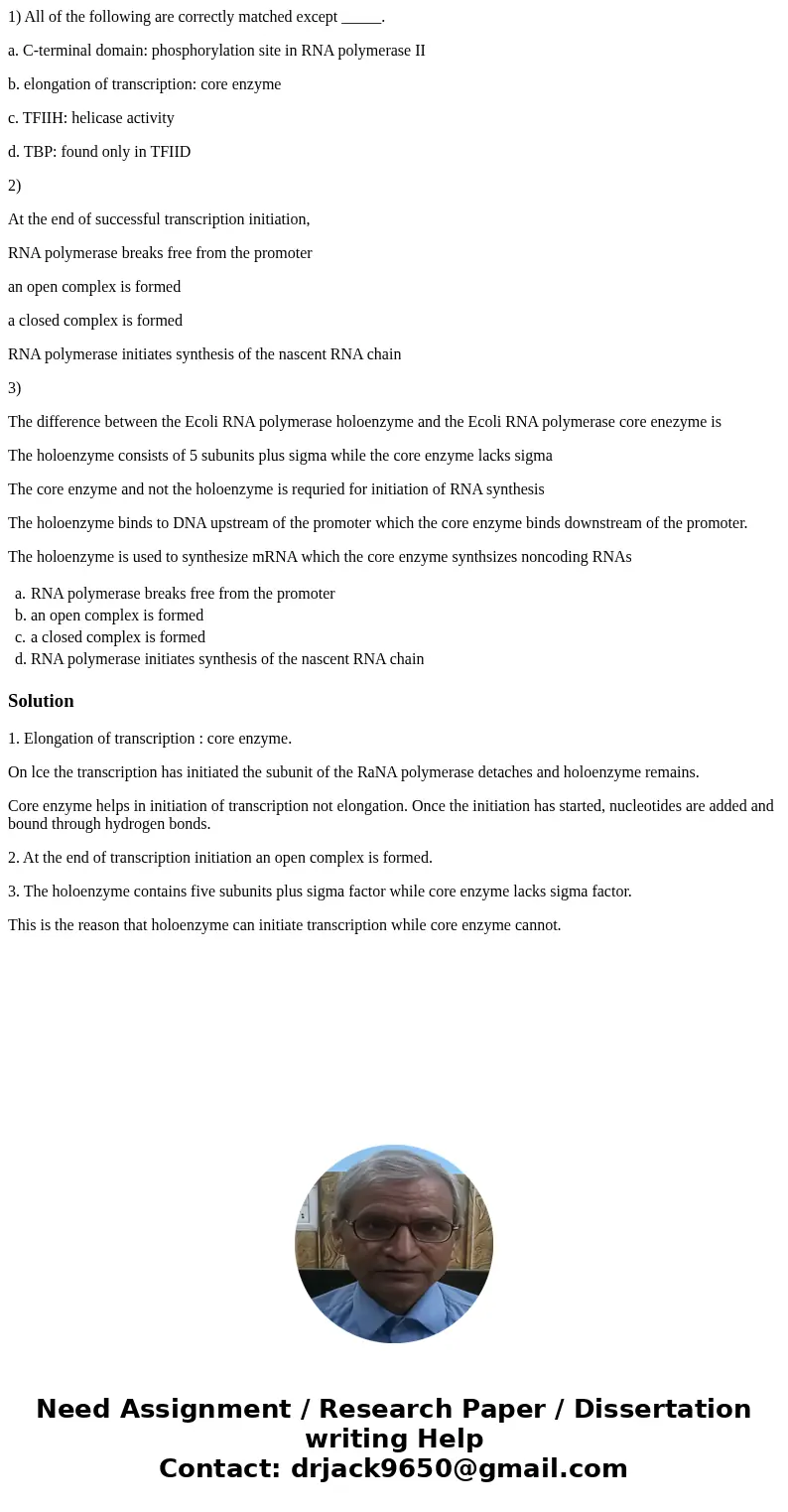1 All of the following are correctly matched except a Cterm
1) All of the following are correctly matched except _____.
a. C-terminal domain: phosphorylation site in RNA polymerase II
b. elongation of transcription: core enzyme
c. TFIIH: helicase activity
d. TBP: found only in TFIID
2)
At the end of successful transcription initiation,
RNA polymerase breaks free from the promoter
an open complex is formed
a closed complex is formed
RNA polymerase initiates synthesis of the nascent RNA chain
3)
The difference between the Ecoli RNA polymerase holoenzyme and the Ecoli RNA polymerase core enezyme is
The holoenzyme consists of 5 subunits plus sigma while the core enzyme lacks sigma
The core enzyme and not the holoenzyme is requried for initiation of RNA synthesis
The holoenzyme binds to DNA upstream of the promoter which the core enzyme binds downstream of the promoter.
The holoenzyme is used to synthesize mRNA which the core enzyme synthsizes noncoding RNAs
| a. | RNA polymerase breaks free from the promoter | |
| b. | an open complex is formed | |
| c. | a closed complex is formed | |
| d. | RNA polymerase initiates synthesis of the nascent RNA chain |
Solution
1. Elongation of transcription : core enzyme.
On lce the transcription has initiated the subunit of the RaNA polymerase detaches and holoenzyme remains.
Core enzyme helps in initiation of transcription not elongation. Once the initiation has started, nucleotides are added and bound through hydrogen bonds.
2. At the end of transcription initiation an open complex is formed.
3. The holoenzyme contains five subunits plus sigma factor while core enzyme lacks sigma factor.
This is the reason that holoenzyme can initiate transcription while core enzyme cannot.

 Homework Sourse
Homework Sourse